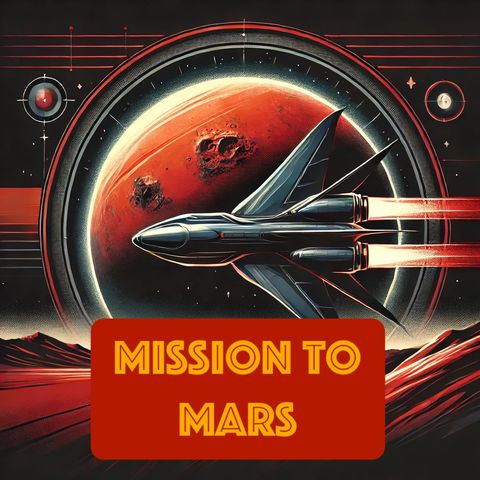Conquering the Red Planet: Insights from Mars Simulation Missions

Regístrate gratis
Escucha este episodio y muchos más. ¡Disfruta de los mejores podcasts en Spreaker!
Descarga y escucha en cualquier lugar
Descarga tus episodios favoritos y disfrútalos, ¡dondequiera que estés! Regístrate o inicia sesión ahora para acceder a la escucha sin conexión.
Conquering the Red Planet: Insights from Mars Simulation Missions
Esta transcripción es generada automáticamente. Ten en cuenta que no se garantiza una precisión absoluta.
Descripción
Living on Mars represents one of the most intriguing and challenging prospects for human exploration and colonization. Given the harsh conditions on the Red Planet, which include extremely low temperatures,...
mostra másNASA's simulation of a mission to Mars, often known as an analog mission, aims to study the feasibility of long-term extraterrestrial living. These simulations typically take place in isolated environments on Earth that mimic Martian conditions to some extent. The objectives are to understand how isolation, remote conditions, and limited resources impact crew behavior, health, and performance.
During these simulated missions, participants live in closed habitats that replicate Martian bases. They follow strict protocols for communication, often experiencing a time delay in messages to simulate the distance from Earth, and they carry out daily routines that would be necessary on Mars. This includes scientific research, equipment maintenance, and simulated emergency situations.
Key learnings from such missions often highlight the importance of maintaining psychological well-being and group cohesion. The isolation and confinement can lead to a range of psychological stresses, including feelings of loneliness, confinement, and separation from loved ones. Hence, selecting the right crew with appropriate training, and ensuring they are equipped with coping mechanisms, is vital.
Moreover, the physical health of astronauts in these simulations is carefully monitored. Limited movement and the need for exercise to combat the effects of lower gravity environments are critical areas of focus. Nutrition is another challenging aspect due to the need for a diet that remains palatable and nutritionally adequate over the duration of the mission.
Technology testing is another crucial aspect of Mars simulations. From life support systems maintaining breathable air and drinkable water to suits and vehicles for surface exploration, each component needs to be tested extensively to ensure reliability under Martian conditions.
These analog missions help refine the technologies and strategies that will be used in actual Mars missions. They provide critical data that helps engineers and scientists prepare for the real challenges of space travel, leading to adjustments and innovations that enhance the safety and effectiveness of long-duration space missions.
By understanding the complexities involved in a simulated mission to Mars, we can appreciate the meticulous planning, resilience, and innovation required to undertake future manned missions to Mars. As research and technology evolve, these simulations become increasingly valuable in bridging the gap between what we imagine and what can actually be achieved in interplanetary travel.
Información
| Autor | QP-4 |
| Organización | William Corbin |
| Página web | - |
| Etiquetas |
Copyright 2024 - Spreaker Inc. an iHeartMedia Company
